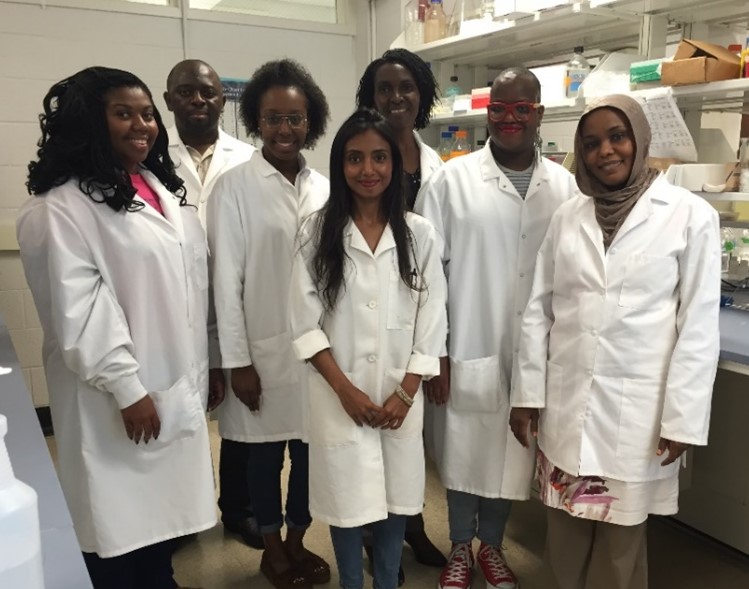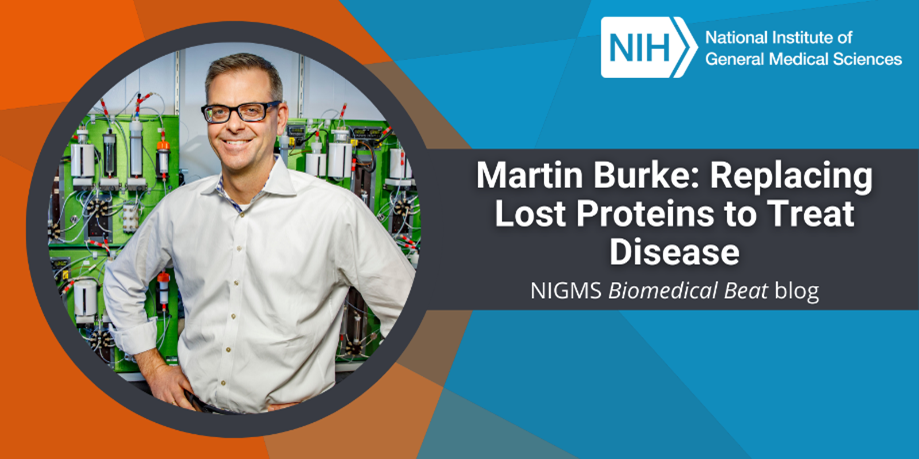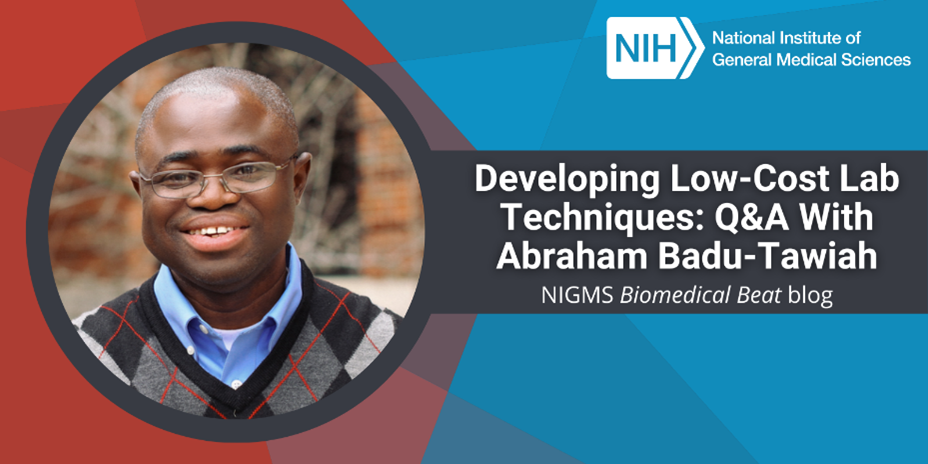
A career path in science is rarely clear cut and linear, which Elimelda Moige Ongeri, Ph.D., can attest adds to its excitement. She went from working in animal reproductive biology to studying proteins involved in inflammation and tissue injury. Dr. Ongeri is also currently dean of the Hairston College of Health and Human Sciences and professor of physiology at North Carolina Agricultural and Technical State University (NC A&T) in Greensboro. In this interview, she shares details of her career, including a change in research focus to human physiology; her goals for the future; and advice for students.
Q: How did you first become interested in science?
A: I was born and raised in Kenya, and, at that time, junior high students were required to select a path to pursue (e.g., the arts or the sciences) and three specific subjects to focus on. My teachers encouraged me to pursue the science path, and I eventually chose to focus on biology, chemistry, and math. Math was my favorite subject at the time, but I didn’t feel that a math degree could lead to many job opportunities, so I chose to pursue biomedical science.
Q: What were the next steps in your educational and career path?
A: After high school, I attended Egerton University in Njoro, Kenya, and earned a bachelor’s degree in animal production. Animal production is a branch of animal science that studies the raising, feeding, and breeding of livestock animals. From there, I attended the University of Nairobi in Kenya and earned a master’s degree in animal physiology.
My goal was to work in research, but I knew that I wanted to teach at the same time, so I earned my Ph.D. in animal sciences from Purdue University in West Lafayette, Indiana. My research project focused on goat embryo development in the lab of Rebecca Krisher, Ph.D. We collected eggs (the female reproductive cells) from goat ovaries, fertilized them in the laboratory, and monitored their growth and development. We also tracked cell division and gene expression in the growing embryos to learn the ideal environment for in vitro fertilization, such as the best nutrients to include in the culture liquid.

I then completed my postdoctoral work (postdoc) at the Pennsylvania State University College of Medicine in Hershey under the mentorship of James Hammond, M.D. There, using a pig model, I studied gene regulation in ovarian granulosa cells, which are the cells responsible for supporting the development of mature eggs. Reproductive biology research projects such as these can have a great impact on fertility technology available in the clinic for both animal and human reproduction.
Once I completed my postdoc, I stayed at Pennsylvania State University College of Medicine for 4 years as an assistant professor and research associate in the lab of Judith Bond, Ph.D., working with enzymes called meprins. I initially explored a role for meprins in reproductive function, but I wanted to shift my research to something more closely related to human disease. I focused on the role of meprins in diabetic kidney disease and an acute kidney injury that occurs when poor blood flow reduces oxygen levels in kidney tissue.
Q: What does your lab study now?

A: Meprin enzymes are still the center of my research. Meprins are the most abundant enzymes at the surface of the cells lining the tiny tubules in the kidney where nutrients and liquid that have been filtered out of blood are reabsorbed back into the bloodstream. Enzymes can have many effect: They can degrade, activate, or inhibit other proteins; cause inflammation; or trigger many other changes. My research aims to understand why meprins are so abundant in the kidneys, what proteins they regulate, and what their overall effect is on kidney cells and the organ as a whole.
We learned that meprins move from the surface to the inside of cells in response to stress or injury, which can be observed in certain kidney diseases. We want to learn if the actions of intracellular meprins are harmful or beneficial—are they preventing damage, or causing more? So far, our results show that intracellular meprins can do either, depending on what substrates they target.
We’re also investigating how meprin activity can affect healing from tissue injury, using kidney disease as a model. If we can understand the proteins involved in the disease and what’s causing the associated inflammation, we can help inform the development of medicines to prevent or treat the disease.
Q: Are there potential challenges in creating therapies that target meprins?
A: Meprins are present in other cell types throughout the body, which may be a challenge as we try to design medicines specific to the ones found in the kidney. They’re abundant in the cells that line the small intestines, and are found in certain immune cells, brain tissue, and skin cells. Studies have implicated meprins in some conditions that affect these cells, such as inflammatory bowel disease, Alzheimer’s disease, and cancer.
With the presence of meprins in many cell types, the challenge is how we can prevent the disruption of meprin activity in the intestine, brain, or immune system while addressing the ones in the kidney. Targeted drug delivery systems, which control the release of medicines to only the desired body system, could help us overcome this problem by allowing us to control the activity of kidney-associated meprins, while leaving others unchanged.
Q: Aside from your research, what goals do you have for your career?
A: Historically Black colleges and universities, like NC A&T, are often underresourced compared to other institutions. As I got to know my students and saw their dreams, I made it my goal, despite the inequities, to give them the best possible experience in the lab and to prepare them for careers in any field they wanted to enter. In my role as a dean, I also have the opportunity to influence decisions to make sure that we have research infrastructure in place that will support the success of our students and faculty. Seeing my students’ successes has been one of my greatest accomplishments, and I hope that by increasing support in the lab and advancing research at our institution, the next generation of young researchers at NC A&T will see the same success.
I’m also committed to increasing the diversity of the biomedical research workforce to alleviate health inequities and increase participation in biomedical research and clinical trials. This participation is generally low for minority ethnic groups, due in part to historical mistrust in biomedical research and a lack of scientists and health care workers who look like the people they serve. When people are mistrustful, they don’t ask the questions about their health that they need answers to. This problem has inspired me to commit to training more researchers from the communities that bear the highest burden of chronic disease and to engage with and empower communities to overcome health inequities, increase health literacy, and build healthier lives.
Q: What advice would you give students who are interested in pursuing a career in science?
A: I always tell students to keep an open mind when they are starting their research journey. Many come to me certain about which topic or disease they want to study, but I encourage them to learn skills first. I remind them that it’s more important to find an encouraging mentor and a lab that trains them well, because there will be opportunities to change research fields. I always share my story—I started as a reproductive biologist, but that work led me to studying proteins involved in inflammation and tissue injury! So I encourage them to learn basic research skills and then go toward the path that makes the most sense to them.
Dr. Ongeri’s mechanistic studies on meprin and meprin-substrate interactions in tissue injury are supported by the NIGMS Maximizing Investigators’ Research Award program through grant R35GM141537. Her research on the role of meprin in kidney injury was supported by NIH’s Support of Competitive Research grants SC1GM118271 and SC3GM102049, which NIGMS administered for all institutes and centers at NIH.







